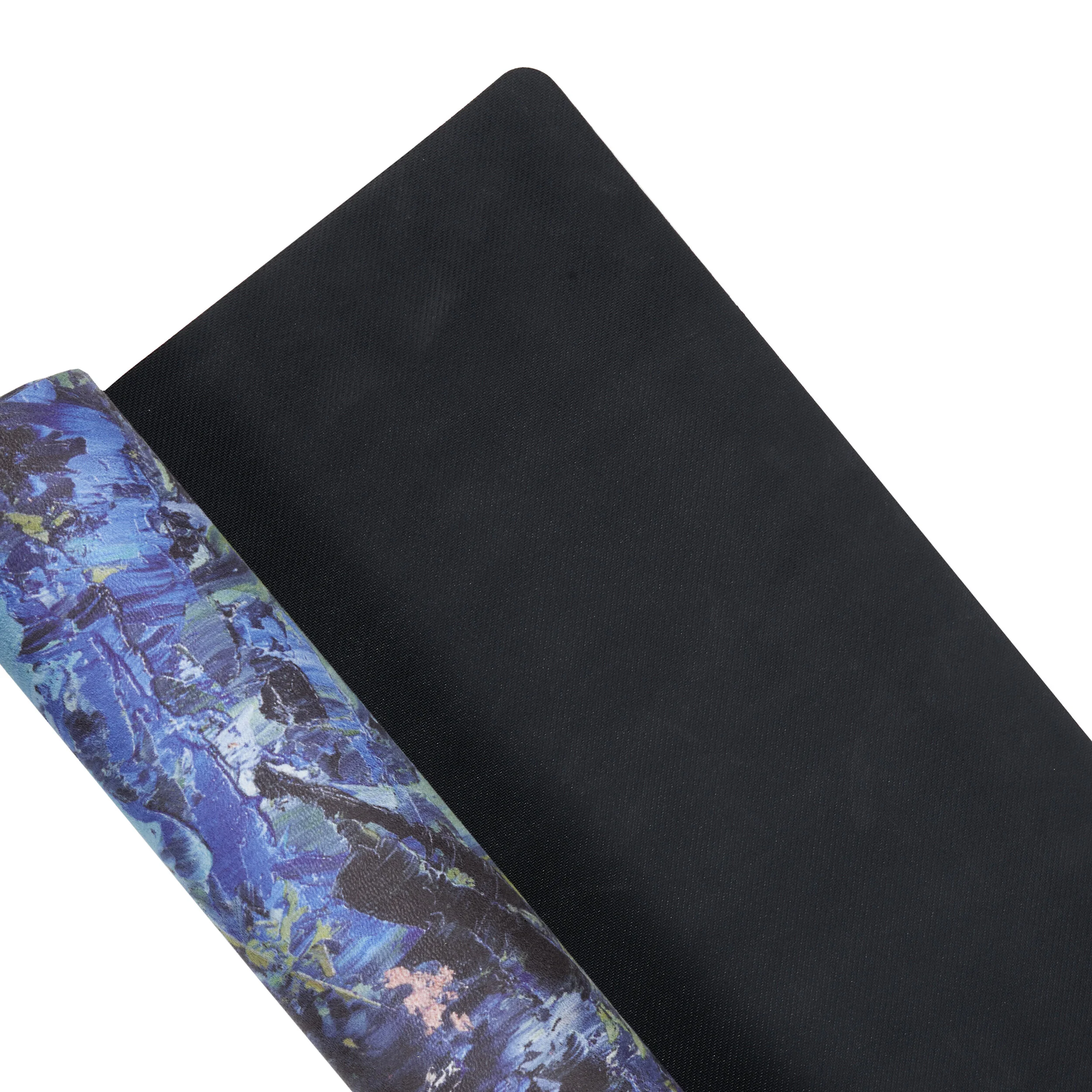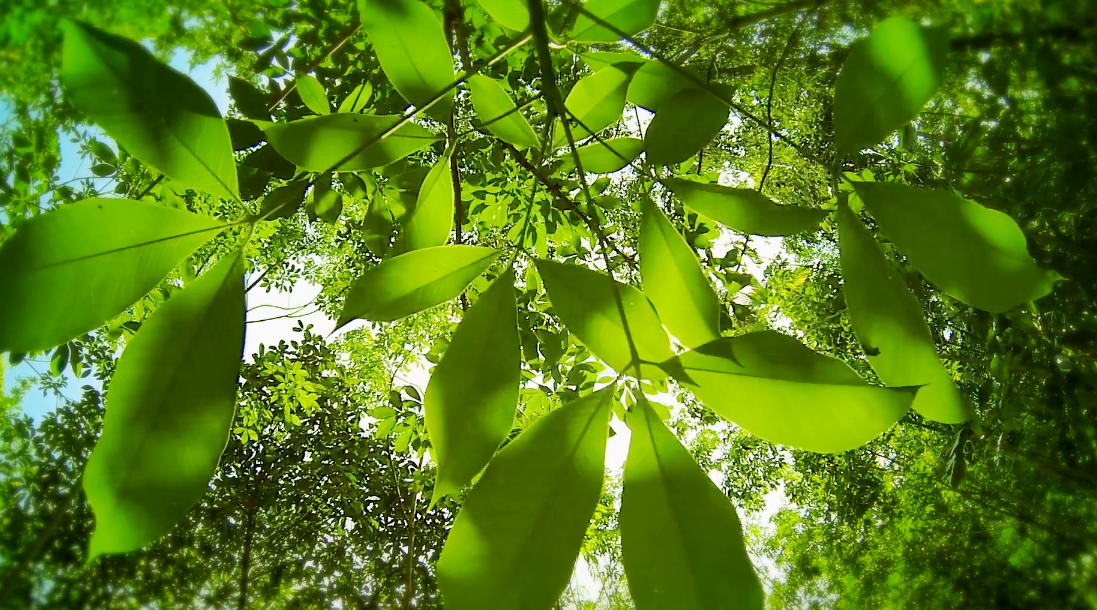Why did we use 100% natural rubber for our yoga mats, and have you ever wondered where our rubber comes from?
Actually it’s a question we get asked A LOT, which shows just how much you all care, which is wonderful and we want you to know all our processes.
Firstly, Natural Rubber is just that… all Natural and grown by the miracle of Mother Earth, an elasticated gift! So don’t buy plastic, when you can buy naturally, non toxic. It all starts with a specific type of tree and our plantation trees look so beautiful, we just had to share some photos! If any of you have travelled through SE Asia, you most certainly would have come across a natural rubber tree and maybe even seen a tapping demonstration...
That natural rubber tree, or ‘Cao Su’ in Vietnamese is carefully harvested over years in the Central Highlands of Vietnam in our sourced plantation and that’s where our production journey starts. The farm is operated by about ten employees, and a few others to watch over the place.
Cao Su ‘Hevea Brasiliensis’ Trees in our plantation.
Vietnam, which is currently the third biggest natural rubber exporter in the world have been planting Hevea Brasiliensis in the country over 116 years and its industry has a long history of development for over 85 years! They know their rubber trees! Our plantation is run by a larger group called
NATURAL RUBBER HAS BEEN IDENTIFIED IN THE NATIONAL ORIENTATION FOR SUSTAINABLE DEVELOPMENT, ESPECIALLY IN FACILITATING HUNGER ELIMINATION AND POVERTY REDUCTION IN VIETNAM.
The natural rubber industry is in the maturity stage of its life cycle, well established and regulated. Realising the urgent need to promote a shift toward more sustainable industrial development pathways, Vietnam’s government has paid special attention to the promotion of green industry.
Vietnam signed the Manila Declaration on Green Industry in Asia in 2009, participated in the Tokyo Green Industry Conference in 2011, and the United Nation Conference on Sustainable Development in June 2012 when the government pledged to promote green industrial development. The government has approved the Vietnam Green Growth Strategy for the period 2011–2020, with a vision to 2050, as “a decisive tendency in sustainable economic development.”

The Natural Rubber sap is scratched from the bark of the tree, this is called Tapping.
The trees need to grow and mature before they can be used, needing sunlight, water and nurturing. They are grown for seven years before they can be carved for rubber. The trees are carved from the bottom up, allowing access to a white liquid-like substance, similar to sap in other trees. Instead of sap though, it’s rubber! The Sap (Latex) is collected in pots or coconut shells and emptied about every three hours once the pots are full and a new area is carved. The tree can be carved in many places on the bark, roughly taking about seven years to re-grow and the area can be tapped again. Harvesting starts with a fine incision in the bark of the tree. This operation makes it possible to transect the lactiferous vessels, allowing the latex to flow. It is harvested into cups placed below the tapping notch. Generally, tapping is done every 4 days, and the latex in the lactiferous vessels is renewed after harvesting. Rubber can be harvested in a liquid state – latex – or after coagulation in the field (cup lumps). It is then taken to the rubber factory.
Rubber trees are a significant carbon sink, very useful in the fight against global warming. The rubber tree has a lifecycle of almost 30 years: when the trees’ yield decreases, the timber can be used for furniture, pulp or even firewood, or else it can be left in the field to decay naturally and maintain a good level of organic matter in the soil.
A NEW TREE WILL REPLACE THE OLD, AND THE PROCESS STARTS ALL OVER AGAIN. IT’S ACTUALLY QUITE REMARKABLE!
At the factory, the cup lumps are stored in bunkers for several weeks before processing. Then this raw material is washed, mixed, granulated and dried several times before being pressed in 35kg bales. Strict adherence to quality standards throughout the processing process ensures compliance with end-users’ requirements. The finished product is then labeled "Technical Specified Rubber" (TSR). After the rubber is collected from the tress the emulsion is mixed and the rubber is put through a series of rollers. This releases all the excess water and allows the rubber to get flat and smooth, until it is pure gum rubber. The pure gum sheets are inspected, hung out to dry over bamboo and stacked into bales at which point they leave the plantation to the market.
Rubber, a raw material used in many domestic and medical objects:
Natural rubber
Origin - Extracted from the rubber bark
Annual global consumption - 46% of annual global consumption
Products - Tyres, manufactured articles, elastic thread, carpets, surgical protection products, condoms and yoga mats!
Natural rubber is such a widely used material, it is now well regulated and vastly changed following WWF and Michelin joint venture with Barito Pacific Group in 2015 to only buy sustainable natural rubber, it cause a ripple effect through the industry - with other tyre and manufacturing giants following suit. The rubber manufacturers had to match the sustainability and fair trade levels set by Michelin to sell to them and the other large corporations. Over the last six years this has dramatically changed the industry for the better. Our plantation sells to the Vietnam Rubber Group, VRG, who in turn brings the product to market around the world. They have sustainability policies in place to ensure they work to create a fair workplace, with a department specifically for inspections of all of their plantations, with specific departments for fair labour and slavery.
Sustainable Forest management has been implemented in Vietnam since the 1990s. The second phase (from 2006 to 2020) of the Vietnam Forestry Development Strategy has been approved by the Vietnamese government. On January 11th 2019, the Minister of Agriculture and Rural Development issued the Decision to establish the Vietnam Forest Certification Office (VFCO). VFCO is responsible for all activities in terms of sustainable forest management and forest certification and issues national standards and guidelines of the VFCS. VRG Endorsed: 29 October 2020. You can read more about this new legislation and governing body PEFC standards here.
Working through a larger body and corporation who have agreed to sustainable practice and laws, including how to create more gender equality in a vastly male industry and sustainable farming, working with farmers to advise them on sustainable practices and not to take shortcuts is important to create a fairer industry and gives us the chance to focus on the product and developing the best creativity with such a versatile material.
You can read more about the vegan suede surface in our blog post here.

Thank you for caring so much.
Caring what is in your product, clothing and food right now is so important to the future. Try your best to eliminate your use of plastics, we can see the effect they are having on our planet. We know natural rubber is a more expensive, heavier material to use and carry to class, but that’s why… it is natural! No plastic fillers have been used to lighten the mat. Such a small sacrifice to make to know that breathing in child’s pose is non toxic, and it’s just more comforting to practice on a beautiful, natural mat especially with something as pure as your journey with yoga.

The sunlight streams through the leaves of the rubber tree.
Namaste
X











0 comments